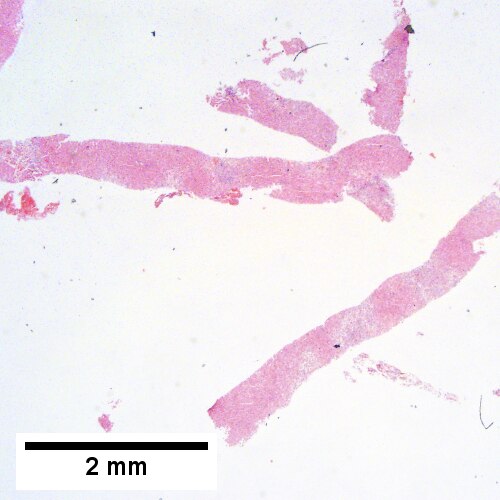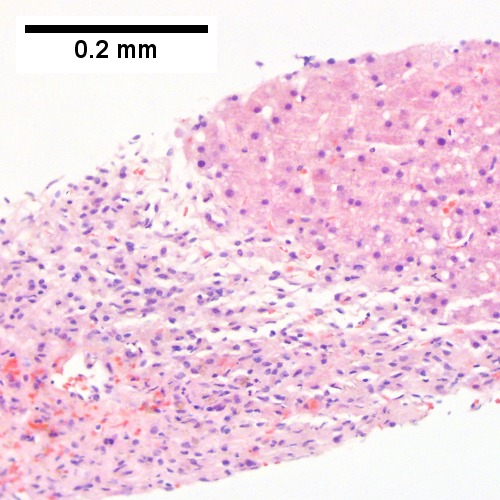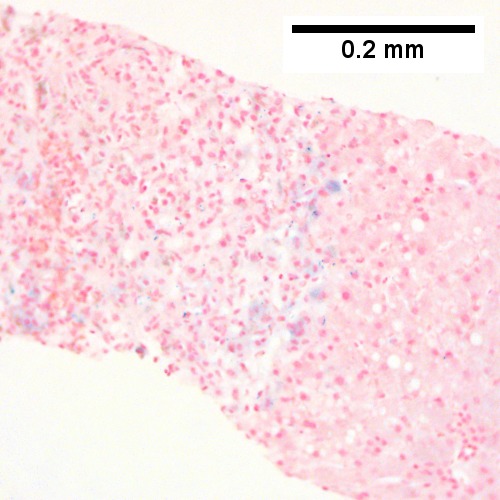Difference between revisions of "Fulminant hepatic necrosis"
| Line 3: | Line 3: | ||
==General== | ==General== | ||
Etiology: | Etiology: | ||
*Viral, i.e. [[Hepatitis A]], [[Hepatitis B]] | *Viral, i.e. [[Hepatitis A]], [[Hepatitis B]],<ref name=pmid14614604>{{Cite journal | last1 = Igaki | first1 = N. | last2 = Nakaji | first2 = M. | last3 = Moriguchi | first3 = R. | last4 = Akiyama | first4 = H. | last5 = Tamada | first5 = F. | last6 = Oimomi | first6 = M. | last7 = Goto | first7 = T. | title = An outbreak of fulminant hepatitis B in immunocompromised hemodialysis patients. | journal = J Gastroenterol | volume = 38 | issue = 10 | pages = 968-76 | month = | year = 2003 | doi = 10.1007/s00535-003-1180-1 | PMID = 14614604 }}</ref> [[Hepatitis C]]<ref name=pmid26430449>{{Cite journal | last1 = Younis | first1 = BB. | last2 = Arshad | first2 = R. | last3 = Khurhsid | first3 = S. | last4 = Masood | first4 = J. | last5 = Nazir | first5 = F. | last6 = Tahira | first6 = M. | title = Fulminant hepatic failure (FHF) due to acute hepatitis C. | journal = Pak J Med Sci | volume = 31 | issue = 4 | pages = 1009-11 | month = | year = | doi = 10.12669/pjms.314.7618 | PMID = 26430449 }}</ref> - extremely rare. | ||
*Trauma. | *Trauma. | ||
*Shock. | *Shock. | ||
Latest revision as of 18:29, 20 June 2017
Fulminant hepatic necrosis is extensive cell death in the liver. It is classified as a medical liver disease.
General
Etiology:
- Viral, i.e. Hepatitis A, Hepatitis B,[1] Hepatitis C[2] - extremely rare.
- Trauma.
- Shock.
- Poisoning, e.g. mushrooms.[3]
Microscopic
Features:[3]
- Hepatocyte necrosis - key feature.
- Bile duct proliferation.
- Inflammatory cell infiltrate.
DDx:
- Cholangiocarcinoma.
- Angiosarcoma.
- Necrotic metastatic tumour.
Images
A. 
B. 
C. 
D. 
E. 
F. 
Submassive hepatic necrosis. Patient had transaminases in the thousands that rapidly dropped to normal. A/ Pink preserved parenchyma strews empty necrotic spaces. B. Focus of necrosis with no apparent hepatocytes macrophages abuts apparently normal liver. C. Iron stain shows the macrophages bear hemosiderin. D. Reticulin stain highlights the recently dead liver cells. E. Reticulin stain shows a necrotic bridge forming; the multiple small black circles preclude diagnosis of a fibrous bridge. F. Trichrome shows the necrotic bridge (“collapse”) lacks much collagen deposition, as would be expected for bridging fibrosis.
See also
References
- ↑ Igaki, N.; Nakaji, M.; Moriguchi, R.; Akiyama, H.; Tamada, F.; Oimomi, M.; Goto, T. (2003). "An outbreak of fulminant hepatitis B in immunocompromised hemodialysis patients.". J Gastroenterol 38 (10): 968-76. doi:10.1007/s00535-003-1180-1. PMID 14614604.
- ↑ Younis, BB.; Arshad, R.; Khurhsid, S.; Masood, J.; Nazir, F.; Tahira, M.. "Fulminant hepatic failure (FHF) due to acute hepatitis C.". Pak J Med Sci 31 (4): 1009-11. doi:10.12669/pjms.314.7618. PMID 26430449.
- ↑ 3.0 3.1 Cakir, B.; Kirbas, I.; Demirhan, B.; Tarhan, NC.; Bozkurt, A.; Ozcay, F.; Coskun, M. (Nov 2009). "Fulminant hepatic failure in children: etiology, histopathology and MDCT findings.". Eur J Radiol 72 (2): 327-34. doi:10.1016/j.ejrad.2008.07.020. PMID 18771870.